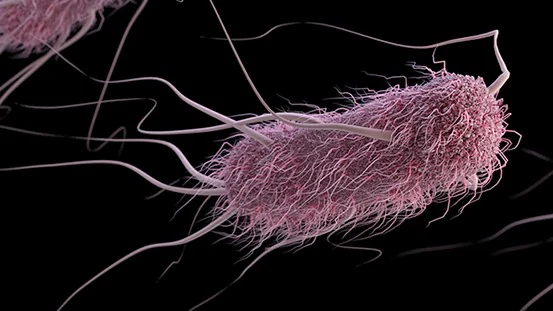This month, Taylor Farms’ yellow onions have been discovered to be the cause of 75 cases of E. coli infections, spread through McDonalds’ Quarter Pounders.
Taylor Farms has since recalled their yellow onions, and many McDonalds locations aren’t selling Quarter Pounders, but they claim they will start selling them again within the week.
There have been 75 cases in 13 states of people developing E. coli infections following the consumption of McDonalds, according to the CDC (Centers for Disease Control and Prevention).
E. coli is a bacteria that can be carried by humans and animals, and it usually spreads through consumption of food that has traces of infected feces. Food can be contaminated through infected water or unhygienic practices, such as workers not properly washing their hands after using the restroom.
The symptoms of an E. coli infection are stomach aches, nausea, vomiting, diarrhea, exhaustion, and fever. While E. coli can often be fought off without medical intervention, it can also escalate and become fatal.
Outbreaks like these can be prevented through following proper food safety procedures, such as allowing for bathroom breaks, washing hands after using the bathroom, and handling manure properly.
Despite all the knowledge we have of disease prevention, outbreaks still happen, whether it be due to negligence or human error.
If not for the quick reaction of the CDC’s investigation and Taylor Farms’ recall, many more could have been infected. Events like this can remind us of why we have these systems in place.
It is important to understand what causes the spread of these foodborne illnesses, not only for food providers, but for the general public, people who eat food every day and yet might not know about proper food handling.
The FDA encourages these four steps to prevent foodborne illnesses: “clean, separate, cook, and chill.”
- Clean
Wash and sanitize any surfaces that may have come into contact with contaminated food. This includes the insides of refrigerators and freezers, counters, cutting boards, and anything else that has indirectly or directly touched contaminated food.
It is important to also clean all of these things regularly to ensure microorganisms don’t grow.
After cleaning any contaminated surfaces, make sure to wash your hands before touching anything else.
- Separate
Keep raw or contaminated foods separate from cooked foods. Use separate cutting boards for different types of food, and sanitize any surface that touches raw foods after use.
Although chicken and beef may both be meats, it is important not to bring them into contact with each other as they have different microbiomes.
- Cook
Be sure to cook meat, poultry, seafood, and eggs to the correct temperature, as raw foods hold microorganisms dangerous to consumption, but these can be killed when heated to the correct temperature. Use a meat thermometer to ensure thorough cooking.
When reheating foods, bring it to a high temperature to kill any microorganisms that may have grown on it since last cooking it.
- Chill
Make sure that your refrigerator is at 40℉ and your freezer is 0℉. When thawing or cooling, do it at a cooler temperature to prevent microorganism growth.
If we follow these 4 simple steps, we can reduce the amount and the severity of foodborne illness outbreaks.


